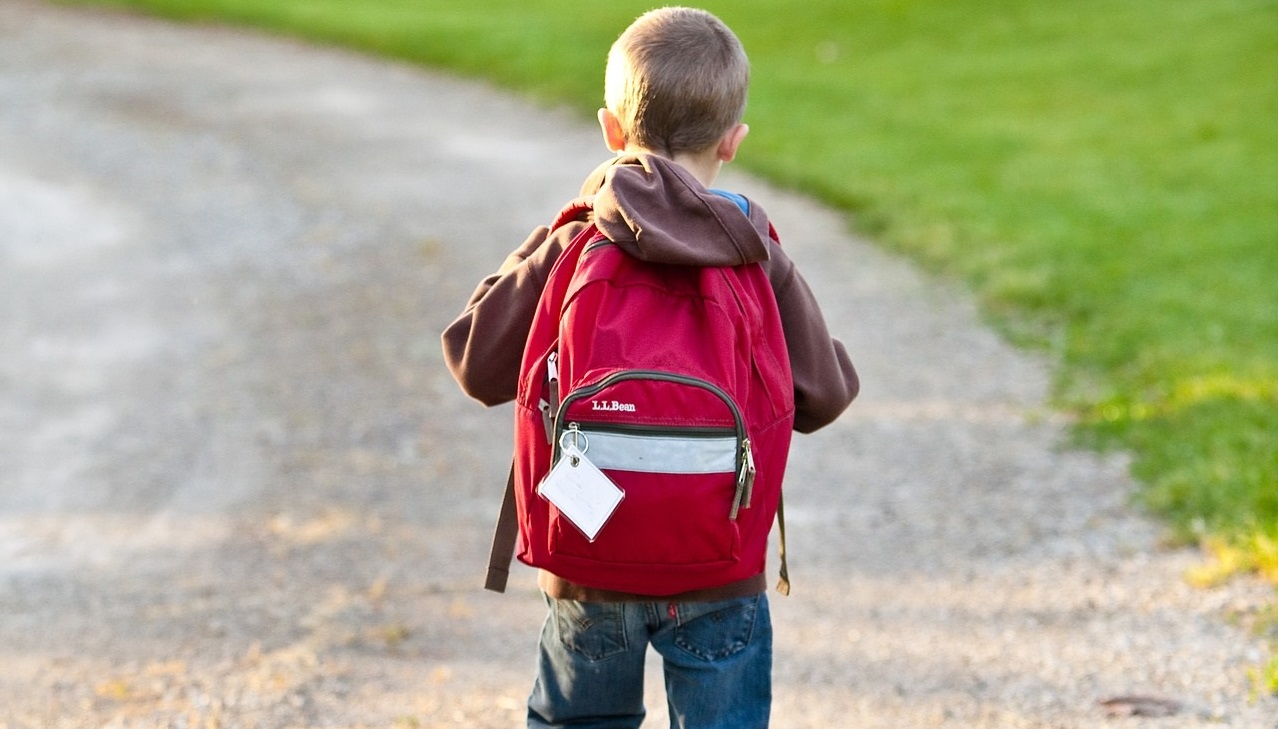July 22, 2021 – Imagine you’re 10 years old. Your alarm goes off early in the morning and you sluggishly get out of bed.
You’re having a hard time keeping your eyes open. You eat breakfast and brush your teeth, ready to head to school. Now you have two options: to sit and turn your brain off as blurry images go by — or to get moving.
When children start the day, their brains need a bit of a jump-start. Waking up, ironically, is pretty exhausting. And being sedentary in a car or a bus doesn’t help.
As adults, we ask kids to start paying attention and thinking critically early in the morning, only to lull them to sleep with the vibrations of a vehicle. The car gets them to school faster — but it also puts the brain into rest mode just when it should be booting up!
And that’s not the only problem with driving kids to school. The combustion engine of a car or bus also spews greenhouse gases and a cavalcade of other toxic chemicals: bad for the temperature of the planet, bad for people with asthma and other respiratory illnesses. Not to mention the fact that with every car out there, roads get more clogged and the daily commute grows longer.
Fortunately, for many of us, there’s an alternative: active transportation.

Active Transportation encourages children (and educators!) to get to and from school using their bodies, instead of hopping into a car. Students start their day the same way, crawling out of bed and stumbling outdoors. But instead of slumping into a car seat, they start to sweat and wake up.
Walking, biking, rollerblading, skateboarding — all of these do the exact opposite of sitting passively in a car. Students train their attention spans and bodies, getting exercise in the morning air while actively pathfinding. They don’t just see a blur of buildings and greenery; they see a living community and local ecosystem.
Once kids reach school, their hearts have gotten a little workout, and blood is pumping to their brains. They may not realize it, but they are ready to learn.
Even when families live far from the school, there are still ways for students to participate in active transportation notwithstanding the geographic barriers. For example, children can be “driven to five” — dropped off five minutes away from the school, so they can reap the benefits of active transportation and minimize the impact of driving.

With creativity and community support, all students can participate in active transportation in one form or another. We’ll talk specifically about some solutions to challenges in a future post.
By participating in active transportation, students set an example for their peers. Soon more kids will start joining in. After that, the community and its officials start taking notes. That leads to building better infrastructure, including more bike and walking paths. This doesn’t just get more kids walking; everyone in town can make use of these amenities.
And it’s not just those engaged in active transportation who benefit. People who work far from home and need to drive will see fewer cars on the road. Plants and animals will have a better chance to thrive thanks to this small change in a community’s behavior. Perhaps most important, everyone will enjoy safer streets and cleaner air.
This isn’t to say there aren’t structural or social barriers to active transportation. We’ll talk about some of these, and how we might ‘ deal with them, in future posts. What barriers do you think prevent people from engaging in active transportation?
